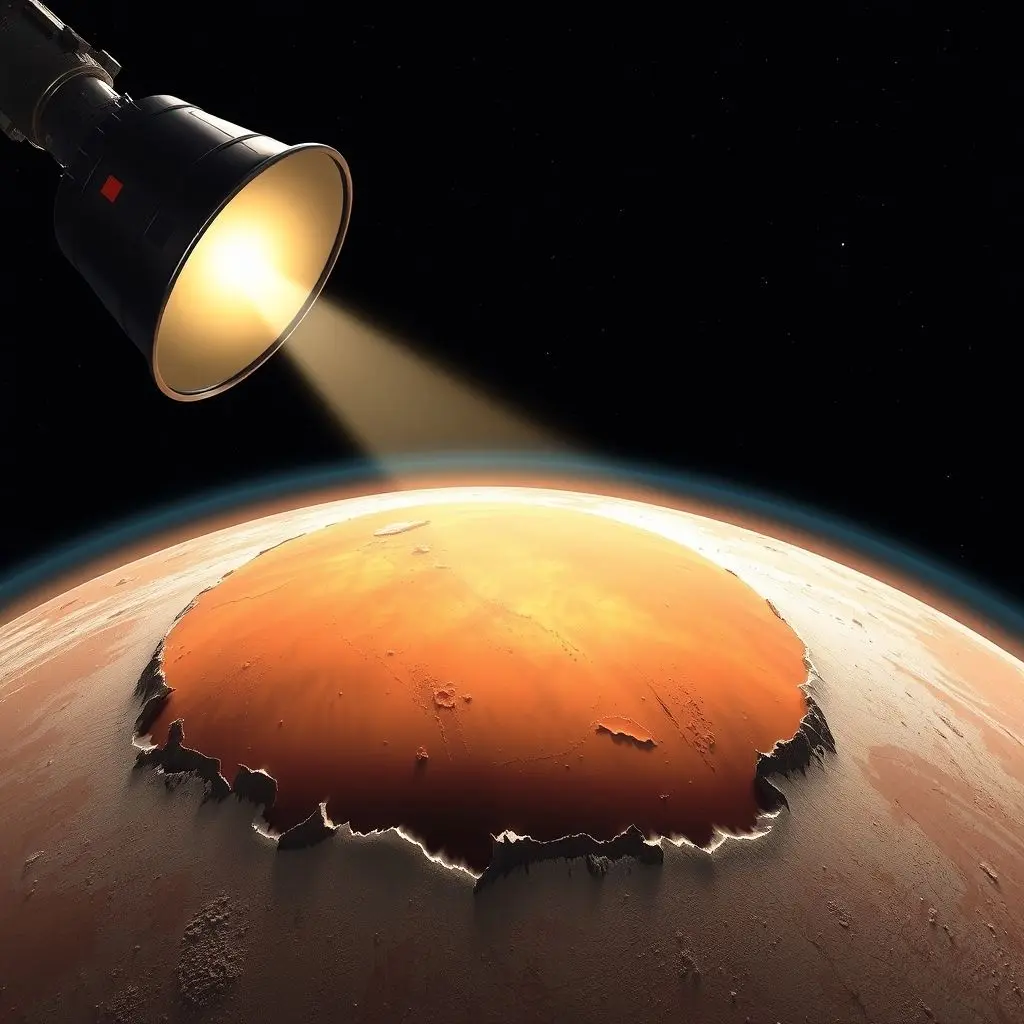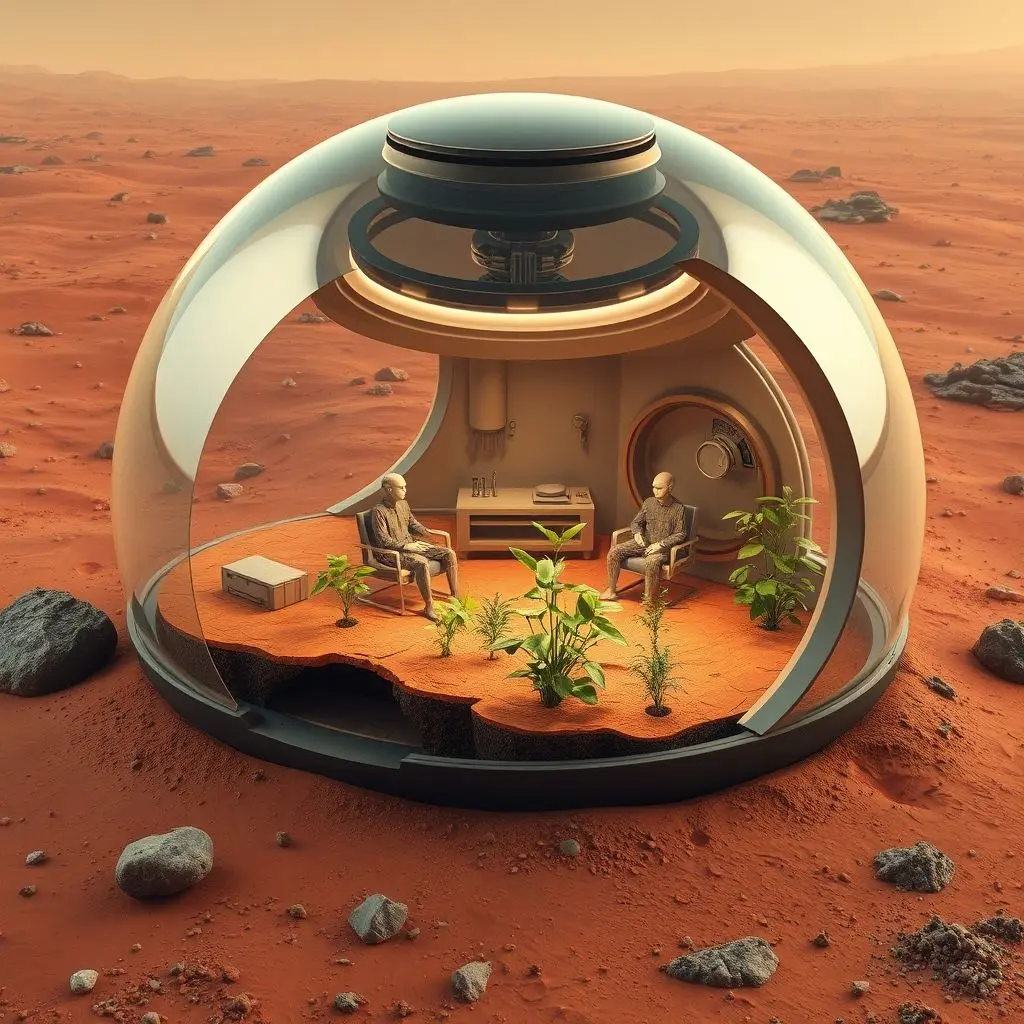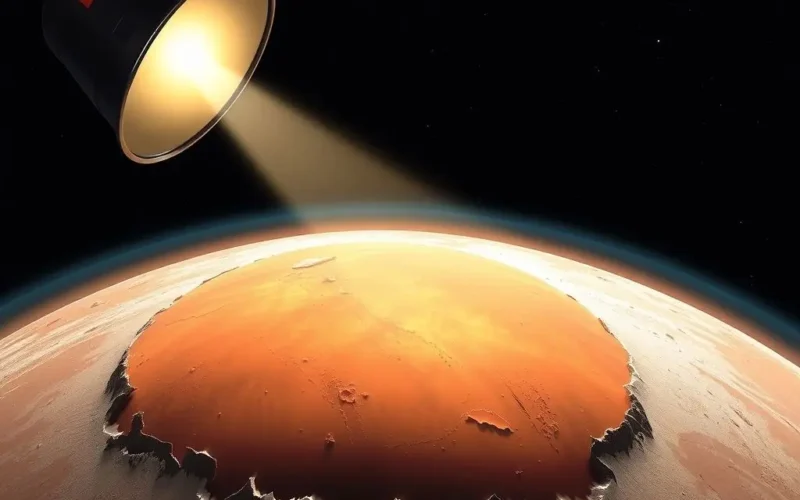We’ve all seen the visions: bustling domed cities under a hazy blue Martian sky, explorers breathing the once-thin air, vast landscapes slowly transforming from dusty red to patches of green. Movies and books paint compelling pictures of humanity’s future among the stars, often starting with making our nearest planetary neighbor, Mars, a second home.
But step away from the blockbuster special effects for a moment. What technology could *actually* take the harsh reality of Mars and make it even remotely habitable for us fragile humans? The difference between science fiction spectacle and plausible engineering is, well, astronomical.
Curious about the reality check? We put together a quick take on the monumental challenge:
Table of Contents
The Martian Reality: Why It’s Not Ready for Us Yet
Before we talk about building a future on Mars, we have to confront the present. Mars is, frankly, terrible for unprotected life as we know it. Three major hurdles stand in our way:
Thin Atmosphere: Mars has an atmosphere, yes, but it’s less than 1% the pressure of Earth’s at sea level. It’s primarily carbon dioxide (about 95%), but it’s so thin you’d die instantly from lack of oxygen and your body fluids would boil at room temperature. Not ideal for a stroll.
Brutal Cold: With such a thin atmosphere, there’s no significant greenhouse effect to trap heat. Surface temperatures average around -60°C (-80°F), plunging to below -100°C (-150°F) at the poles in winter. While equatorial regions can briefly hit 20°C (68°F) in summer, it’s a fleeting warmth.
Killer Radiation: Unlike Earth, Mars lost its global magnetic field billions of years ago. This field acts as a shield against harmful solar and cosmic radiation. On Mars, this radiation bombards the surface constantly, making long-term unprotected exposure a significant health risk, increasing cancer rates and causing radiation sickness.
So, making Mars habitable isn’t just about building bases; it’s about fundamentally changing the planet itself.
Phase One: Warming Things Up (The ‘Least’ Unrealistic Steps)
The first, most often discussed, ‘realistic’ step in terraforming involves trying to thicken the atmosphere and warm the planet. The most accessible resource for this is the carbon dioxide locked up in the polar ice caps (a mix of water ice and dry ice) and potentially in the Martian soil (regolith).
Melting the Poles: A Giant Mirror Solution?
One popular concept, echoed in our video, is the use of gigantic orbital mirrors. Positioned strategically, these vast solar reflectors could focus sunlight onto the Martian polar ice caps. The increased energy would sublimate the dry ice (turn it directly into gas) and melt the water ice. This process would release significant amounts of CO2 into the atmosphere.

How it Helps: More CO2 in the atmosphere means increased atmospheric pressure (making it safer, though still not breathable, and reducing the boiling risk) and a stronger greenhouse effect. This could potentially raise global temperatures by a few degrees, maybe even enough to create some stable pockets of liquid water on the surface, at least temporarily or seasonally.
The Reality Check: While theoretically possible, the scale is staggering. We’re talking mirrors hundreds, maybe thousands, of kilometers across, built and maintained in space. The amount of CO2 released from known reserves might also be insufficient to reach Earth-like pressures and temperatures. NASA studies suggest that even releasing all accessible CO2 might only double the current pressure, still far too low, and raise temperatures by a modest amount. Other methods like importing super greenhouse gases (like CFCs or PFCs) have been proposed but come with their own environmental and ethical baggage, plus require enormous amounts of material.
The Everest of Challenges: Atmosphere and Magnetosphere
Even if we manage to warm Mars and thicken its CO2 atmosphere slightly, we’re still light-years away from a breathable planet shielded from radiation.
Building a Breathable Atmosphere
A breathable Earth-like atmosphere is about 78% nitrogen, 21% oxygen, and trace gases, with a pressure high enough to sustain liquid water and life. Mars has very little nitrogen. Creating oxygen on a planetary scale requires either importing vast quantities (not feasible) or sophisticated in-situ resource utilization (ISRU) processes, like cracking CO2 or water, over millennia. But even if you create oxygen, you need nitrogen (or another inert gas) for pressure, and that’s incredibly scarce on Mars. Finding or importing enough nitrogen to reach Earth-like pressure and composition is a problem with no current realistic solution.

Bringing Back the Shield: The Magnetosphere Problem
Without a global magnetic field, the solar wind strips away atmospheric gases over time, counteracting any efforts to thicken the air. It also allows damaging radiation to reach the surface. Recreating Mars’ internal dynamo that once generated a magnetic field is currently beyond any known technology. Some concepts involve placing a powerful artificial magnetic field source (like a giant magnet or plasma torus) at the Martian L1 Lagrange point (between Mars and the Sun) to create a protective bubble. This could potentially deflect solar wind and allow the atmosphere to build up over very long timescales (thousands to millions of years). However, the technology required to deploy and power such a system at that scale is purely speculative at this point.

The Generational Marathon
Looking at the sheer scale of the challenges – the lack of resources, the energy requirements, the need for technologies that don’t exist yet – it becomes clear that terraforming Mars isn’t a project for a single generation. It’s potentially a process spanning centuries, perhaps even millennia. It requires not just incredible technological leaps but also sustained global effort, political will, and immense resources over vast periods.
Realistic tech for Mars colonization right now focuses on creating small, shielded, self-contained habitats, utilizing ISRU to produce water, oxygen, and building materials within those controlled environments. Planetary-scale transformation remains, for the foreseeable future, a distant dream that pushes the boundaries of our current scientific understanding and engineering capabilities.

Frequently Asked Questions About Terraforming Mars
Let’s address some common queries about this ambitious endeavor:
Is terraforming Mars actually possible? Based on our current scientific understanding and technological capabilities, full Earth-like terraforming (breathable atmosphere, shirt-sleeve temperatures) is not realistically possible in any near future. Partial warming and atmospheric thickening might be, but reaching livable conditions is a monumental challenge.
How long would terraforming Mars take? Estimates vary wildly depending on the proposed method and desired outcome, but transforming Mars into something approaching Earth-like would likely take many centuries, possibly thousands of years. It’s not a quick fix.
What about the dust storms? While massive dust storms are a feature of Mars, they don’t fundamentally alter the long-term climate or the core challenges of atmosphere, temperature, and radiation that terraforming addresses. They are more of an operational hazard for surface activities.
Can humans live on Mars right now? Yes, but only within highly protected habitats. We have the technology for short-term visits and establishing small, shielded bases, but not for living on the surface unprotected or for terraforming on a grand scale.
From Science Fiction Seeds to Long-Term Reality
While the vision of transforming Mars into a second Earth captures the imagination, the realistic tech currently available or foreseeable only scratches the surface of what’s needed. The early steps, like attempting to release trapped gases, are feasible concepts but fall far short of creating a truly habitable world. The grander goals of a breathable atmosphere and a planetary radiation shield require breakthroughs and efforts on a scale humanity has never attempted. It’s less a sprint and more a cosmological relay race, potentially passing the baton of progress across many generations. But hey, every marathon starts with a single step, or in this case, perhaps a few carefully placed orbital mirrors.





